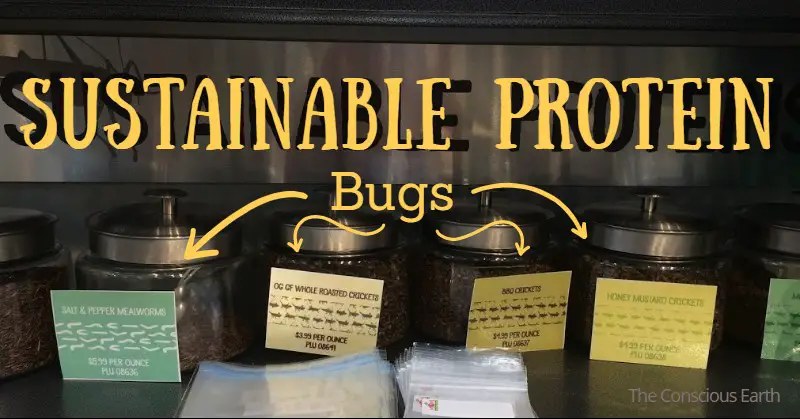
Amidst growing concerns about future global food security, many people are thinking about sustainable ways to provide adequate protein for the world’s growing population. In their book, Sustainable Protein Sources, a team from the U.S. and Canada warns that the world’s population is expected to reach 9.7 billion by 2050, bringing with it a projected 80% increase in meat consumption.1 Here’s how they summarize concerns about reliance on traditional protein sources:
“Animal-derived proteins, such as dairy, eggs, and meat, are the mainstay of Western diets and an integral part of global food production. However, these proteins require the conversion of plant matter by livestock, which is inefficient, requiring disproportionately more land dedicated for growing animal feed. As limited arable land is available for cultivation of food, feed, as well as fuel, proper land utilization and management is imperative. In addition, high levels of CO2, water availability, and climate change may affect growth and yields of several critical crops. Nonetheless, global temperature rise-induced changes in weather patterns may further reduce agricultural land and protein harvest from aquatic sources.”1

Professors from Montana State University and Wageningen University in the Netherlands took on the topic of edible insects as a potential protein source with “high potential to contribute to a more sustainable and socially more equitable global food security.”2 Their rationale? “Insects emit low levels of greenhouse gases, need little water, and require limited agricultural land. Their protein content is similar to conventional meat, the level of unsaturated fatty acids is high, and they are a good source of B vitamins and minerals like zinc and iron.”2
Agritech Capital, an agricultural strategy and investment firm, offered these insights into the market for edible insects that is expected to grow to $1.2 billion by 2023:3
“Although 2 billion people worldwide already eat insects, North Americans and European, don’t have a history of eating bugs, and find the idea harder to swallow…The race is on to create commercial large-scale production and deliver a reliable supply of bug protein to the marketplace. Major feed companies and suppliers are watching and stand ready to scoop up successful startups that can demonstrate consistent and predictable production output. Ag sector giants like Cargill Inc., Wilbur Ellis, Bühler Group, and food giant McDonald’s are either in the game or testing the waters.”3
The video below shares creations by Chef Joseph Yoon at The Brooklyn Bugs Pop-Up Restaurant where his goal was “to remove the stigma and sensationalism around eating insects.”4 You have to admit, the dishes like “Manchurian Scorpion with Lobster & Wonton Chip” are creative, intriguing, and even beautiful. As one of the diners said, “Honestly, I couldn’t even tell I was chewing a scorpion, so not a big deal.” 4
So, how can we embrace this sustainable form of protein? That team from Montana State University and Wageningen University suggest that for the Western world, “consumer acceptability will relate to pricing, perceived environmental benefits, and the development of tasty insect-derived protein products, such as cricket bars.” 2

Washington Post Food Columnist, Tamar Haspel, had this thought on how insects as human food might take off: “Once the idea that something is disgusting takes up residence in the human brain, it’s hard to get rid of it. It’s easier to make sure it doesn’t move in at all. It’s too late for me…and for anyone else who’s reached adulthood with that idea intact. Kids, though, are where change happens. If we can collectively raise a generation of children who think bugs are cool and yummy, it’ll be easier to move beyond the cricket flour phase and on to the worms and caterpillars starring in dishes where they replace animal protein, which is the whole point.” 5
I have enjoyed some delicious Cricket Protein Bars (I ate the first one without realizing the Chocolate Chip Cookie Dough was made with cricket flour) and appreciate the ongoing educational efforts that go into product packaging. For example, Exo Protein Bars include these startling facts: Crickets require a tiny fraction of the water that cows do to make the same amount of protein, Crickets 1 gallon, Chickens 567 gallons, Pigs 800 gallons, Cows 2,000 gallons. 6

I’ve shared photos from the Sustainable Protein counter in my favorite organic grocery store. You can see the staff is working hard to make the selections attractive. Somehow, I just haven’t been able to lift the top off those jars and scoop up some mealworms for my next batch of muffins.
I’d love to hear from readers how you’ve made the leap to incorporate insects more widely (and on purpose!) into your cooking.
—R.A. Kroft
Sources
1Nadathur SR, Wanasundara JPD, Scanlin L. Proteins in the Diet: Challenges in Feeding the Global Population. Chapter in Sustainable Protein Sources. Academic Press, 2017.
2Van Huis, A. and Dunkel FV. Edible Insects: A Neglected and Promising Food Source. Chapter in Sustainable Protein Sources. Academic Press, 2017.
3White, Kathryn. The Buzz About Insect Protein. Agritech Capital Website. 22 June 2019.
4Video: Food Insider. We Ate Insects At The Brooklyn Bugs Pop-Up Restaurant. 22 February 2018.
5Haspel, Tamar. Eating bugs can help the environment. So How do we get past the ick factor? Washington Post. 31 October 2017.
6Exo Protein Bars. Why Crickets? Company Website.
Photos by R.A. Kroft for The Conscious Earth
—
R.A. Kroft writes about her day-to-day journey in living a smaller, more sustainable life and other topics that interest her.

This Site Was Inspired By An Interest in Protecting the Environment:
We had the privilege and joy of learning from Dr. Charlie Stine who instilled a love for the natural world through incredible field trips with the Johns Hopkins Odyssey Certificate program in Environmental Studies. At the time, the program was endorsed by the Maryland Department of Natural Resources. Sadly, after Dr. Stine retired, the program was phased out. We hope that we honor his legacy by shining a bright light on environmental issues and sharing good news about the success of various conservation programs when possible.

